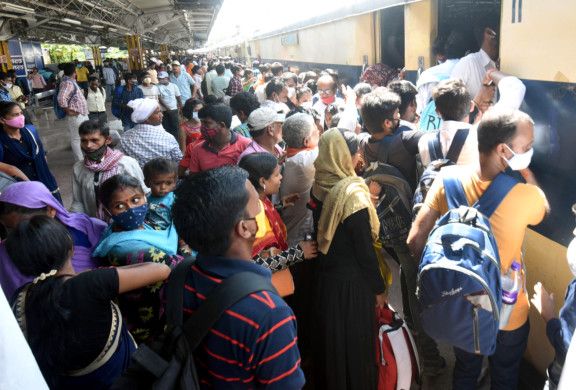
Patna: A study conducted by two leading institutes has found that the COVID-19-related lockdowns and restrictions not only took a heavy toll on human lives and livelihoods but also left disastrous impacts on health, nutrition and education of girls and children from poor families.
According to study, the pandemic badly disrupted the provision and access to child and maternal care services due to lack of transport facilities as a result of lockdown. The study was conducted by the Centre for Development Economics and Sustainability (CDES), Monash University, Australia and the Institute for Human Development (IHD), New Delhi.
The report titled “Changing lives and livelihoods in the wake of COVID-19 pandemic in rural Bihar” states that around 28 per cent of households with children below 24 months missed their routine immunisation while 41 per cent of households with pregnant or lactating women reported being unable to avail of the ante and post-natal check-ups.
Nearly 88 per cent of households with health problems complained they didn’t get the transport to see the doctors or reach the hospitals. More than a quarter also reported long waits before receiving medical attention and 22 per cent found the treatment unaffordably costly, says the study.
The study also says that about 16 per cent of children did not receive any alternative food supple-ments from the government due to closure of schools which had been providing them midday meals. “Similarly, the provision of food supplements for the 0-6 year old children through the Anganwadi centres was also disrupted,” the report said. About 30 per cent of households had children in that age group. Again, 33 per cent households with pregnant/lactating women did not receive the Take Home Ration from these centres.
The study says migrant labour is an important source of livelihood for households in rural Bihar and about 55 per cent of households have at least one migrant worker but 94 percent of them reported being adversely affected by COVID-19. According to the report, the percentage of households affected with livelihood crisis was marginally higher among Dalits and backward community people than the Upper Castes and Muslims.
According to the study, for about 45 per cent of households, all income sources remained affected. It said about 70 per cent of harvesting households reported unusual difficulties in harvesting, threshing/ winnowing while 53% reported unusual difficulties in marketing/ selling.
Households who harvested a crop during COVID-19 reported reduced availability and/or higher cost of a number of inputs. Most critically affected input was agricultural equipment, implements and machinery with 44 per cent of harvesting households reporting reduced availability and 34 per cent reporting its higher cost, the study revealed.
“About 43 per cent of cultivating households reported unusual difficulty with ploughing/ hoeing/ land preparation, 53 per cent with sowing or transplanting, and 37 per cent with weeding,” the study. The reference period for studying the impact is April-September 2020, the six-month period following the first national lockdown announced by the Prime Minister that began on March 24.
The most notable finding is that all casual labour households reported that they were affected by the pandemic disruption. If the study is to be believed, about 18 per cent of casual labour households re-ported that Mahatma Gandhi National Rural Employment Guarantee Act (MGNREGA) work was af-fected, nearly 90 per cent reported casual agricultural labour having been affected whereas 70 per cent reported casual non-agricultural work was affected
“The objective of conducting such study was to assess both the differentiated economic impact of the pandemic as well as support received by rural households in Bihar,” said Gaurav Datt, deputy director with Centre for Development Economics and Sustainability, and associate professor, Department of Economics.
While the covid-19 case load from the first wave was concentrated in urban areas, the suppression measures have potentially deep though under-investigated economic impacts on rural households through a range of channels. Rural livelihoods are intimately connected to the urban, he added.








